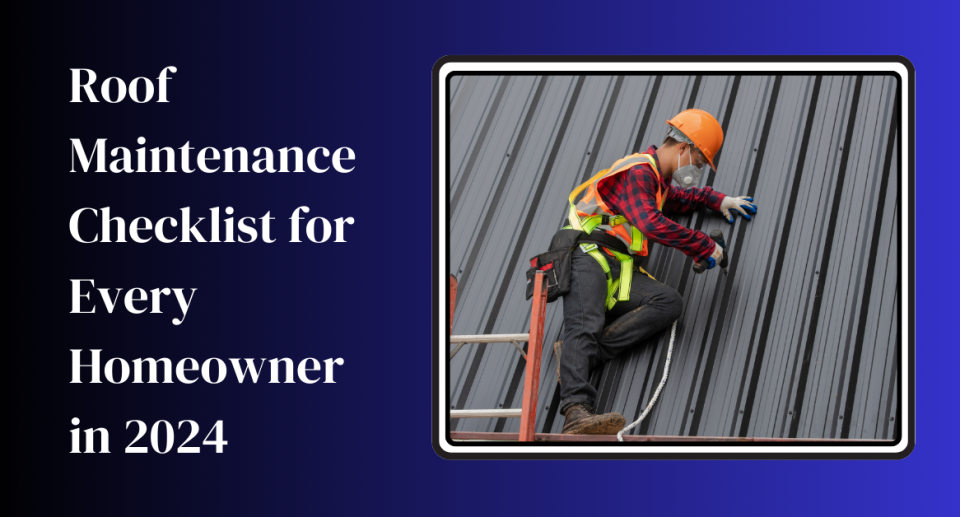Keeping your home in good condition is important, but sometimes problems can show up without you realizing it. Structural damage is one of those issues that can start small but turn into a big problem if not dealt with. The good news is, you don’t need to be an expert to spot signs of trouble. Cracks in the walls, uneven floors, or sagging ceilings are all things to watch out for.In this guide, we’ll explain what causes these problems, show you 12 signs to look for, and give you easy tips on what to do if you see any issues. Let’s get started and make sure your home stays strong and safe!
What causes structural defects?
Structural defects in a home can arise from a variety of factors, often related to issues with the foundation, framing, or construction materials. One common cause is inadequate or improper foundation design and construction, which can lead to settlement, shifting, or cracking as the house settles over time. Factors such as poor drainage, expansive clay soils, or water damage can exacerbate foundation problems, causing the soil around the foundation to erode or shift.
Another common cause of structural problems is natural wear and tear, which happens over time due to weather or aging materials. For example, moisture and changing temperatures can cause materials to break down, leading to issues like rotting wood or rusting metal. On top of that, poor construction, like using low-quality materials or sloppy work, can create weak spots in the structure. Regular upkeep and quick repairs are important to fix these issues early and keep your home safe and strong for the long term.
Here are the 12 Signs of Structural Damage
1. Cracks in the Foundation
Foundation cracks are among the most serious indicators of structural problems. These cracks can appear in various forms vertical, diagonal, or horizontal. Small, hairline cracks might not be alarming, but cracks wider than 1/4 inch, or those that seem to be growing, are cause for concern. They could suggest that the foundation is settling unevenly or shifting, which may be a sign of underlying issues like soil instability or water damage. Regular inspection and prompt professional evaluation are crucial to prevent further deterioration.
2. Cracks in Walls
Cracks in your walls, particularly those that appear around doors and windows, can signal structural movement. While small cracks may be cosmetic, larger cracks, especially those wider than 1/4 inch or those that continue to grow, can indicate problems with the home’s framing or foundation. Cracks that form in a zigzag pattern or run from the ceiling to the floor are particularly concerning and should be assessed by a professional to determine the extent of the damage.
3. Sagging Ceilings
Ceilings that sag or have noticeable bulges are a sign that the structural supports above are not functioning correctly. This can be due to weakened ceiling joists or problems with the roof structure. The sagging might be accompanied by water stains, which could indicate leaks in the roof or plumbing issues. Immediate inspection is important, as sagging ceilings can lead to more serious problems if left unaddressed.Immediate inspection and repair are crucial when dealing with sagging ceilings. Ignoring the problem can exacerbate the damage, leading to more severe structural issues, increased repair costs, and potential safety hazards.
4. Doors and Windows That Stick
When doors and windows become difficult to open or close, or if they appear misaligned, it typically indicates that there may be structural issues within your home. Such problems often stem from shifting foundations or structural movement, which can cause the frames of doors and windows to become distorted. This misalignment might be accompanied by gaps or cracks around the frames, suggesting that the house is settling or that there are deeper issues with the structural integrity.
5. Uneven Gaps on Windows and Doors
Uneven gaps around windows and doors are a clear indicator of potential structural issues in your home. These gaps can appear when the framing of your windows and doors becomes misaligned due to shifting foundations, settling, or structural movement. As the house settles or the foundation shifts, it can cause the frames to move out of their original alignment, resulting in uneven gaps. Regular maintenance and prompt repairs are crucial to preventing further complications.
6. Missing or Damaged Roof Shingles
Missing or damaged roof shingles can seriously undermine the integrity of your roof, potentially leading to leaks and water damage. Shingles that are cracked, curled, or missing expose the underlying roofing structure to the elements, which can accelerate deterioration and cause more extensive issues. This damage not only increases the risk of water infiltration but can also lead to problems such as mold growth, wood rot, and compromised insulation. To prevent these significant issues, it’s essential to address any shingle damage promptly by repairing or replacing the affected shingles.
7. Cracked or Bulging Exterior Walls
Cracks or bulging in exterior walls can signal significant structural problems within your home. Such issues often arise from shifts in the foundation or weaknesses in the structural support systems. Large or worsening cracks may indicate underlying foundation instability or other serious concerns that require professional attention. It’s crucial to have a structural engineer evaluate these conditions to identify the root cause and determine the necessary repairs. Addressing these problems promptly can help prevent further damage and ensure the structural integrity of your home.
8. Brick or Siding Damage
Damage to brickwork or siding, such as cracks, shifting, or separation from the house, can often indicate underlying structural issues. This type of damage may signal movement or instability in the home’s foundation or framing. When bricks crack or siding shifts, it often reflects changes or stress in the structural elements of the house. Addressing these signs early is crucial to prevent further deterioration and potential structural damage. Timely repairs and professional assessments can help identify the cause of the problem and ensure the structural stability of your home.
9. Uneven or Cracked Flooring
Uneven or cracked flooring can be a red flag for issues with the subfloor or the home’s foundation. When the flooring material, such as tile or hardwood, displays cracks or appears uneven, it often reflects underlying problems with the support structure beneath. These issues might stem from shifting foundations, settling, or damage to the floor joists. If you observe such problems, it’s essential to have a professional evaluate the situation to determine if there are any significant structural concerns that need to be addressed.
10.Popping Sounds or Settling Noises
Unusual noises like popping or settling sounds can indicate underlying structural shifts in your home. These noises might occur due to changes in temperature or the natural settling process of the house over time. Frequent popping or settling noises can be a sign of issues with the structural stability, such as movement in the foundation or changes in the framing. If these sounds are persistent, it’s important to have a professional inspect your home to identify any structural problems and prevent potential damage. Early investigation can help address issues before they escalate and ensure the overall stability of your home.
11. Sagging Roof and Roof Leaks
A sagging roof and roof leaks are serious issues that can compromise the integrity of your home. A sagging roof, often visible as an uneven or drooping roofline, typically results from weakened supports, overloaded rafters, or damage, and can indicate deeper structural problems. Roof leaks, on the other hand, occur when water seeps through damaged shingles or compromised flashing, potentially leading to interior damage such as mold and wood rot. Both issues require prompt attention from a professional to assess the extent of the damage, make necessary repairs, and prevent further complications.
12. Soil Pulling Away from House Walls
Soil pulling away from house walls is a troubling sign that can indicate significant structural issues. This problem occurs when the ground around your home shifts or erodes, leading to gaps between the soil and the foundation walls. Such soil movement can be caused by factors like poor drainage, expansive clay soils, or water damage. As the soil recedes, it can lead to foundation instability, causing cracks in the walls and potentially affecting the overall structural integrity of your home. Addressing this issue promptly by improving drainage, adding soil to fill gaps, and reinforcing the foundation, if necessary, is crucial to prevent further damage and maintain the stability of your home.
What to do if you find a structural defect?
1. Document the Problem:
Start by thoroughly documenting the structural defect. Take clear, high-resolution photographs from different angles and at various distances to capture the full extent of the issue. Note any changes or progression over time, including when you first noticed the problem and any observable effects, such as cracks widening or new damage appearing. Keeping detailed records will be invaluable when consulting professionals, as it provides a clear history of the issue and helps in understanding its development.
2. Consult a Structural Engineer:
Engaging a licensed structural engineer is a crucial step. Structural engineers are trained to assess the safety and stability of a building’s structure and can offer expert opinions on the nature and severity of the defect. They will conduct a comprehensive evaluation of your home, including inspecting the foundation, load-bearing walls, and other critical structural elements. Based on their findings, they will provide a detailed report, outlining the causes of the defect, potential risks, and recommended corrective measures.
3. Monitor and Maintain:
After repairs have been completed, regularly monitor the repaired areas for any signs of recurrence or new issues. Set up a routine maintenance schedule to inspect critical structural components and address any minor issues promptly before they escalate. Regular maintenance can include checking for signs of moisture, ensuring proper drainage, and keeping an eye on the condition of your home’s foundation and structural elements. Staying proactive with monitoring and maintenance helps ensure the long-term safety and durability of your home.
4. Address Contributing Factors:
It’s important to address any factors that may have contributed to the structural defect to prevent future problems. For example, if poor drainage or water damage was identified as a contributing factor, implement solutions such as improving gutters and downspouts, grading the soil around your home to direct water away from the foundation, or repairing leaks. By tackling these underlying issues, you can help safeguard your home against recurring structural defects and maintain its overall stability.
5.Seek Professional Repairs:
When your roof shows signs of damage, whether due to age, weather, or wear and tear, it’s crucial to seek professional repairs immediately. Delaying necessary fixes can lead to more severe issues, such as water leaks, mold growth, or even structural damage to your home. If you’re in need of roofing company in the woodlands texas partnering with a reputable contractor who understands your specific needs and local requirements will help ensure a smooth and successful project
Protecting Your Home’s Structure with Timely Repairs
Addressing roof damage promptly is essential to safeguarding your home’s structural integrity and avoiding more serious issues down the line. Professional roof repairs ensure that the work is done correctly and efficiently, preventing problems such as leaks and mold growth that can lead to costly repairs if left unchecked.
Investing in expert roofing services not only resolves existing issues but also extends the lifespan of your roof. By prioritizing quality repairs, you protect your home from future damage and maintain its overall value. Ensuring your roof is in top condition is a crucial step in preserving the safety and comfort of your home.




